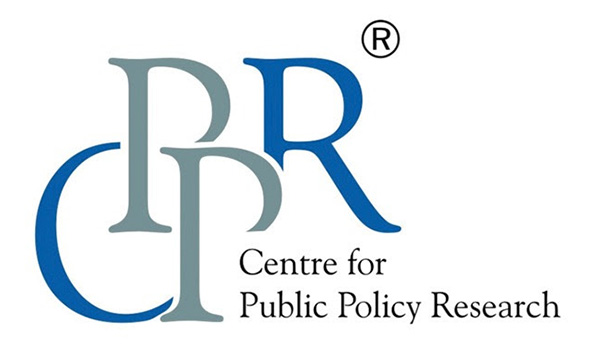Articles

Role of Private Sector in Chinese Economy- Part 2
August 20, 2021
NEP and Higher Education: Translating Policy into Action
August 27, 2021Vietnam is fast emerging as an important US Foreign Policy Destination

US’ commitment to Southeast Asia is firm and is best demonstrated by two back to back visits. Earlier this month Secretary of Defense Lloyd J. Austin III visited Singapore, Vietnam, and the Philippines, and now Vice President Kamala Harris arrived in Singapore on her maiden visit to the region. Her next stopover is in Vietnam.
In Singapore, Harris reaffirmed US’ “commitment to working with our allies and partners around the Indo Pacific to uphold the rules based international order, and freedom of navigation, including in the South China Sea,” Though directly not connected with the stated purpose of the visit, Kamala Harris also shared with her hosts about US’ hurried pullout from Afghanistan and labelled the current situation in that country as ‘chaotic’ amid comparisons being drawn with the 1975 US pullout from Saigon. She clarified that Washington’s current focus is on “evacuating American citizens, Afghans who have worked with us and Afghans who are vulnerable, including women and children and that is our singular focus at this time,”
Similar articulation including the ‘lexicon’ can be expected when Vice President Kamala Harris meets the Vietnamese political leaders. “Rules based international order”, “Freedom of navigation” and “South China Sea” would be very much part of her conversations in Hanoi as also assurances of “commitment to working” with Vietnam in the Indo-Pacific. These had been highlighted during Secretary of Defense Lloyd J. Austin III visit and there was also an attempt to enquire how far Vietnam would commit to the US’ Indo-Pacific strategy which targets China.
Besides making reference to Covid-19 which is raging in Ho Chi Minh City (currently put into strictest lockdown), vaccine supplies to Vietnam including commitment to donate 77 ultra-low temperature freezers for storage will be highlighted. The US has so far provided five million doses of Moderna vaccine and under an agreement between Vietnam and American vaccine makers (Moderna and Pfizer) additional 80 million doses of vaccine will be supplied.
Kamala Harris will also be present at the opening ceremony of the US Center for Disease Control (CDC) in Hanoi that will also serve as the CDC’s regional office for Southeast Asia to deal with issues involving infectious diseases. It merits attention that the U.S. Agency for International Development (USAID) has pledged over $20 million dollars in assistance to help Vietnam fight the pandemic.
Vietnam War related matters would also be on the agenda; but Kamala Harris focus will be on economic and bilateral trade issues. Significantly, both sides have continued to deepen the 2007 US-Vietnam Trade and Investment Framework. Also, the US Department of the Treasury and the State Bank of Vietnam reached an agreement on Vietnam’s currency practices with US announcing “no action under the Section 301 investigation” resulting in satisfactory resolution of the matter concerning currency manipulation.
Vietnam is hoping to be given ‘market economy status’ by the US as has been done by Australia, India, Japan and South Korea. It is noted that “from Vietnam’s perspective, this would be the most credible signal that the U.S. is finally interested in “normalizing” bilateral trade.” However, the US would like that Vietnam “transition from a “socialist-oriented market economy” to a Market Economy. Hanoi is also keen that the US rejoin the Trans-Pacific Partnership (TPP). Be that as it may, the US will keep in mind the Regional Comprehensive Economic Partnership (RCEP) signed in November last year in which Vietnam is snugly enmeshed and China is a major trading partner.
China acknowledges that the US is an important trading partner of Vietnam, and ASEAN-China trade in 2020 pegged at $731.9 billion; and in the first half of 2021 the bilateral trade recorded 38.2 percent growth. In that context, the US is an important competitor but according to a Chinese specialist, “it would be delusional for it [US] to believe the regional supply chains will develop as it wishes”.
A Chinese Academy of Social Sciences scholar notes that frequent high level visits by the US are a reflection of its “declining confidence in marshalling those countries against China”. But in the same breath, a Xinhua editorial on Kamala Harris’ visit to the region is portrayed as a sign of anxiety in China. It is argued that by wooing Southeast Asian countries it is creating a “ring of containment against China”. Further, according to the editorial, these countries are “reluctant to choose sides between China and the United States, and America’s ‘wishful plan’ will end in failure,”
Meanwhile, during the Regular Press briefing by the Chinese Foreign Ministry on August 23, the Spokesperson noted that China believes that “exchanges between countries should be conducive to promoting mutual trust, and peace and stability in the region and the world at large” clearly suggesting that China considers Kamala Harris visit to Singapore and Vietnam as ‘Routine’.
Image Courtesy- Alec.org
Views expressed by the author are personal and need not reflect or represent the views of Centre for Public Policy Research.
Dr Vijay Sakhuja is Honorary Distinguished Fellow with CPPR and associated with our Centre for Strategic Studies. Dr. Sakhuja, a former Indian Navy officer, is also former Director, National Maritime Foundation, New Delhi. He earned his MPhil and PhD from the Jawaharlal Nehru University, New Delhi. He specializes in issues of national security and public policy, particularly in the context of ocean affairs, geopolitics, Climate Change, Arctic, Blue Economy and 4th Industrial Revolution Technologies.

